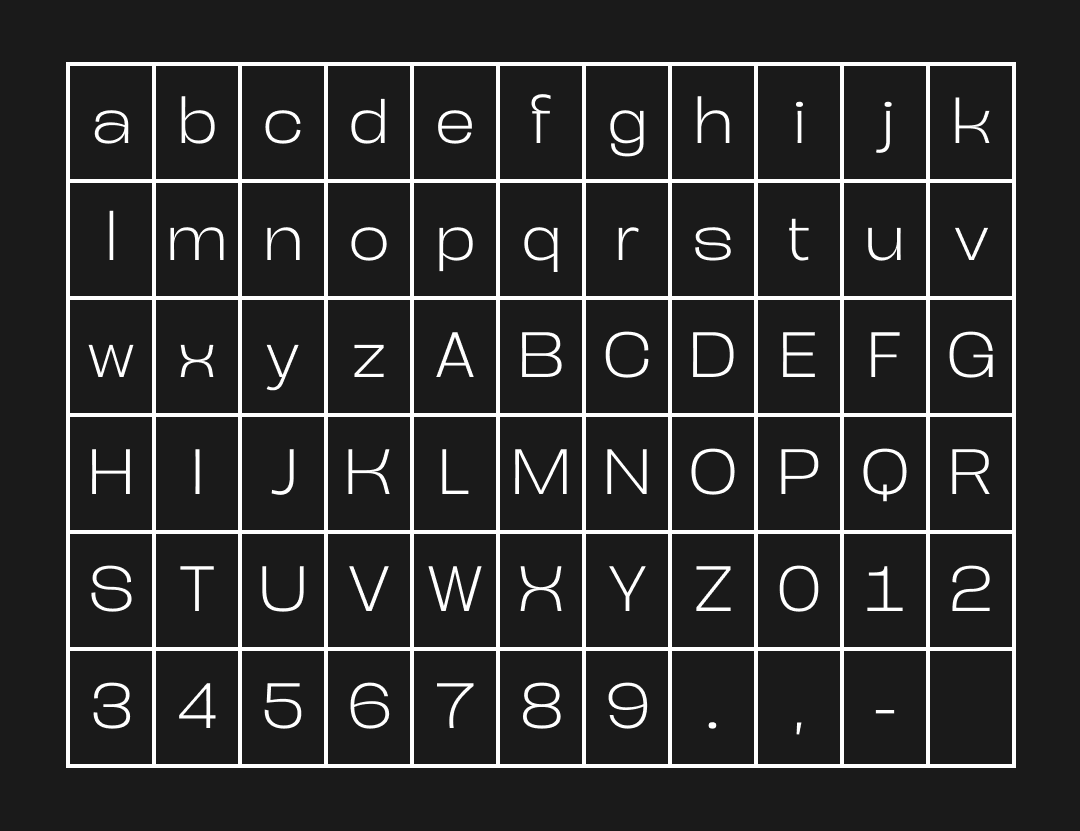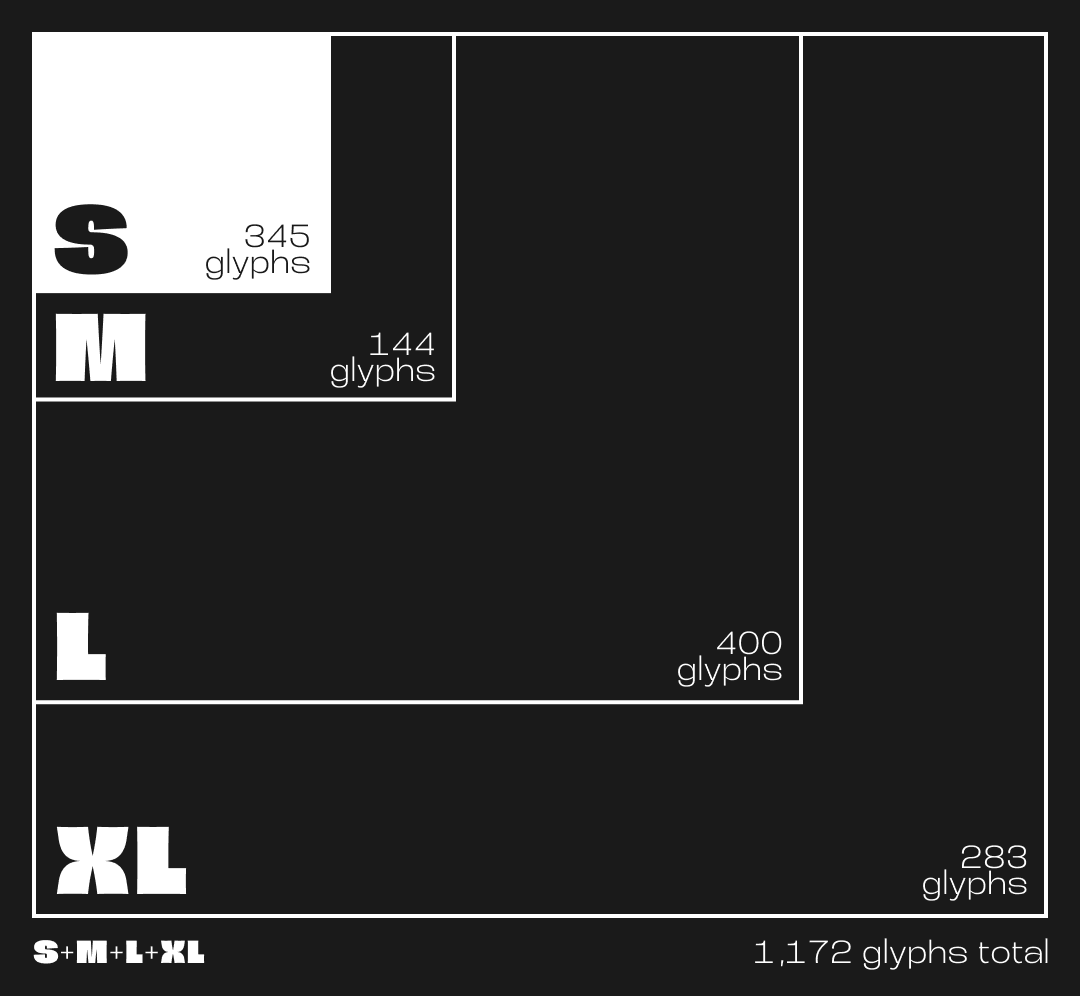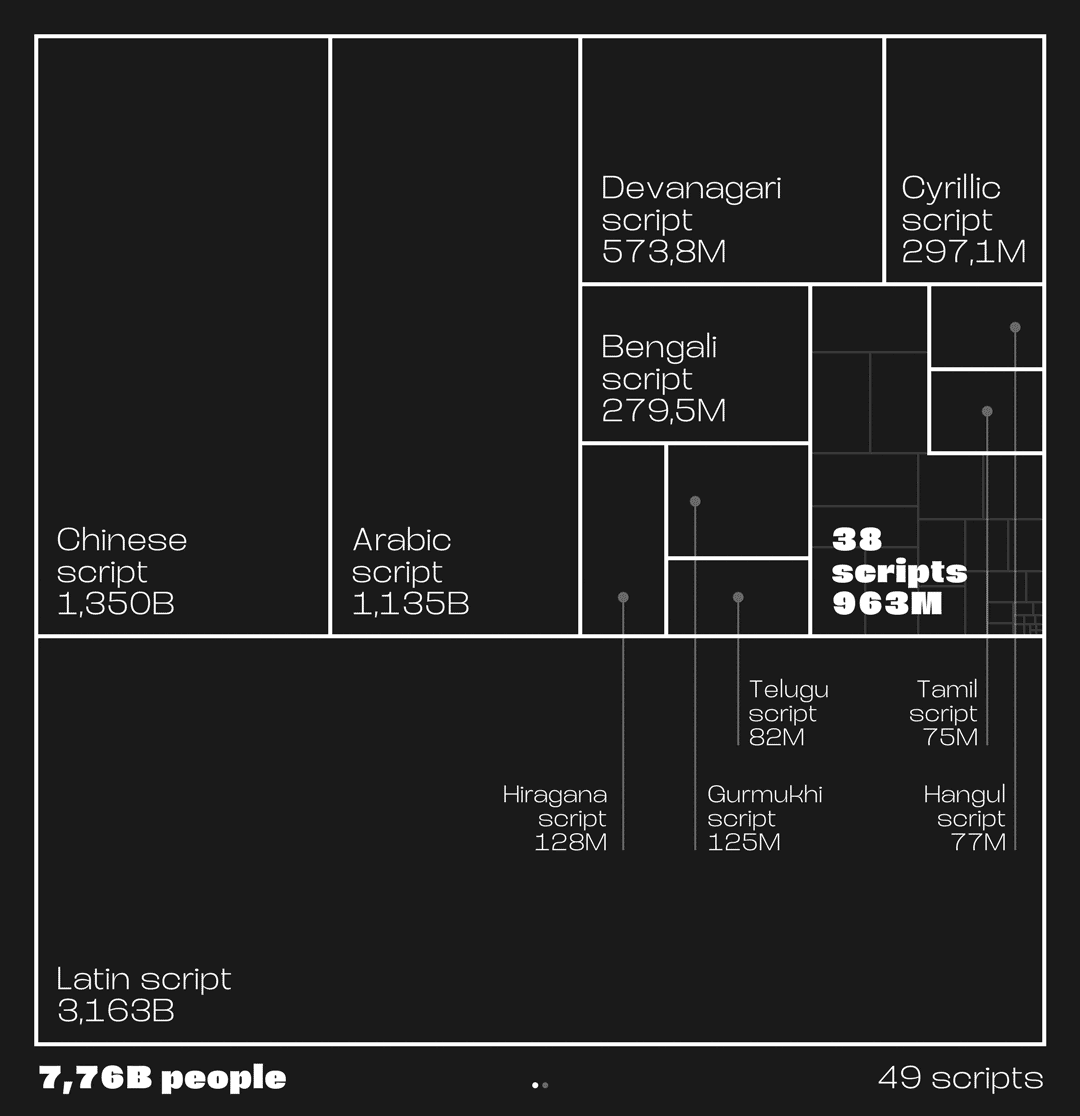Scripts, Languages and Culture
Today’s special is about a world of signs… Food for thoughts 🌍

Beyond basic character sets

Usually when we think about typography in the western world, we think about English, and maybe eventually some other European languages (like Spanish, German or even French). The scope of work to design a font covering the basic English characters (let’s say setting a headline) requires ‘only’ uppercase and lowercase characters (52 glyphs). Adding the numbers and a couple of punctuation marks: this looks manageable. And if we consider that native English speakers are around 400 Million worldwide, that’s probably more than enough potential consumers. But…
Communication, cultures and languages are not limited to what is available using the English character set. If we look at the languages based on the Latin alphabet: we are aiming at 533 languages. That leaves a lot of room for designing fonts.
As a native French speaker, I’m already used to more ‘sophisticated’ characters. Once I had a correct understanding of what is required for French, I was curious to learn more about other languages. Learning German in high school brought another tasty layer. Visiting countries like Spain, Finland or Croatia added more flavours and diversity. Each encounter with a culture is a learning opportunity. And potential new knowledge in a font project. Side note: learning about the food culture, music and the arts in any regions is a blessing as well!
Back to more type-related things. Two moments helped me frame this part of the work. The first one was the discovery of the Unicode consortium (and the impressive book that you can browse for hours). The initiative — to make it quick — catalogues all the possible glyphs for past and present forms of communications signs in the context of computers and information systems. I’ve listed an entertaining video about Unicode at the end of this post. The second and more recent moment was the work of Christoph Kœberlin. And it’s coming next! ⬇
Latin S, M, L and XL
No, it’s not a t-shirt brand I’m trying to promote here. It’s a bunch of Latin character sets by Christoph Kœberlin. Character sets are the glyphs we are choosing to put in our font and that defines which language(s) can be (properly) displayed on screens. Christoph is a Type Designer and Font Engineer from Berlin. Discovering his work on the Pangea superfamily, I also discovered what he was proposing to support more Latin-based languages.
His project on GitHub is a series of character groups with different sizes (hence the metaphor from the clothing industry). He describes it as: ‘Latin character sets for fonts that want to support more than the European languages.’
We can all agree that this is not the fonts that want to support more languages, but rather the people behind these projects that decide to put some work into it. To me it feels like accessibility and inclusivity by answering the question: what are we willing to do to welcome more people from more varied cultures and languages using our fonts?
Christoph detailed the approach in his article ‘More Latin’.
I know that Rutherford Craze from Mass Driver aims at more language support using Christoph’s sets.
On my side, I’m using the Latin-S character set for now (200M additional readers/speakers). A future goal would be to cover the Latin L set (with the Vietnamese language alone the way in the M set). Which is not such a hard stretch goal to aim for, but still a bit of work.

In the end, it is not how many glyphs or kerning pairs we have in our files but how many people we can (potentially) serve with it.
Beyond Latin
Looking at the bigger picture: it seems that the Latin-based fonts are omnipresent. What about the other scripts? What about the other cultures and languages?
My perception of the type world is for sure biased. I see too few non-Latin scripts releases in my social media echo chamber (I need to work on that). To get a representation of the scripts distribution, I’ve created a visualisation of both the population and their scripts on one slide. And the number of languages in those scripts on the other slide.

Notes on the infographic:
- My main data source is Hyperglot by Rosetta type foundry.
- I’ve crossed check some information on Wikipedia.
- Languages are supposedly ‘living’ ones, where people still write and speak those languages.
- The native speakers count gives an approximative/partial idea of things, without taking into account the level of education, a potential second or third native language, context of those speakers, etc. #Limits
- I know it is very un-perfect: grouping the scripts and languages that are not top 5 is a bad design decision. They are the ones needing the more care: I’m aware of that.
- This is definitely not a formal research, rather my personal way of getting a visual situational awareness artefact.
- I can publish the dataset and the source file of the dataviz to those interested.
Two things I will do:
- Go beyond Latin: get out of my comfort zone, meet more native speakers, enrich my practice and keep learning about languages and cultures.
- Collaborate: open my projects to non-Latin-first designers, share the source files with them if they want to work on extending the families and work in teams on multi-script fonts.
Additional links
- ‘Why I can type ±©♥🔥🂱Ʊ in this title’ by Phil Edwards, an entertaining and insightful introduction to Unicode and writing systems in our digital world
- Recording of the talk ‘Having an accent in type design’ by Aleksandra Samuļenkova at Type@Cooper (last week): inspiring and driven, an instant reference.
- The Missing Scripts project, a long-term research project studying known writing systems and particularly the ones not yet present in Unicode.
- Granshan: a conference and a competition that celebrates non-Latin typefaces.
The topic for the next post is not defined, but it will probably be shorter than this one and the last one. 😆
Please comment and ask questions, like if you want, share if you feel like it.
Thank you for your time, cheers!
Guillaume
